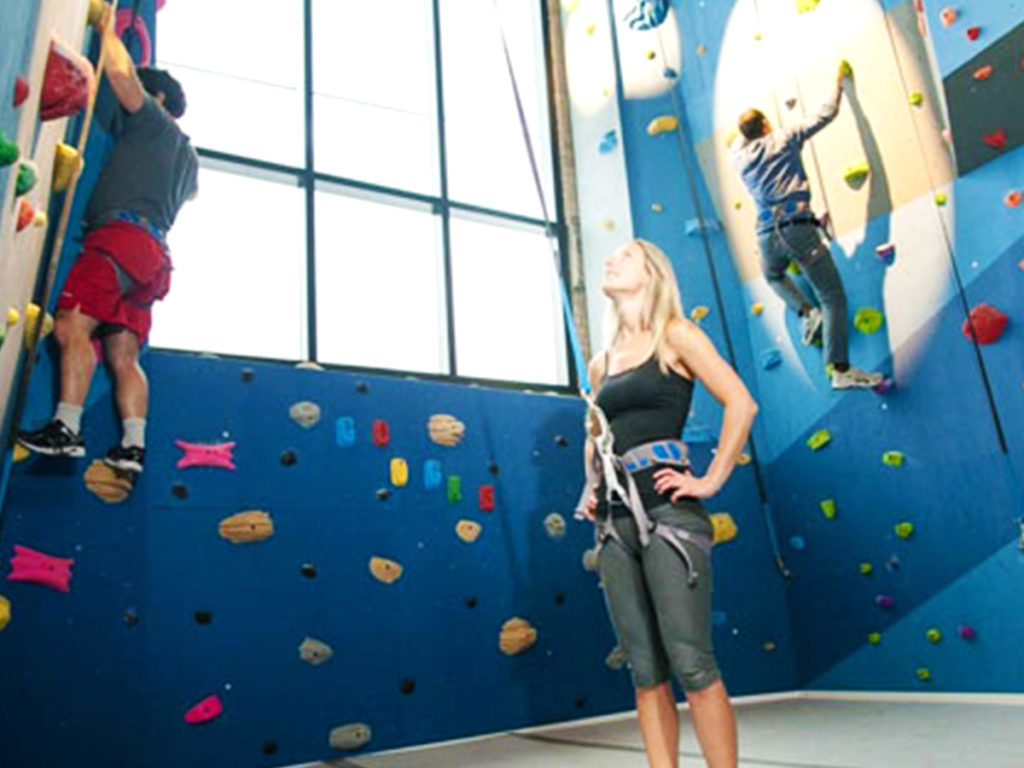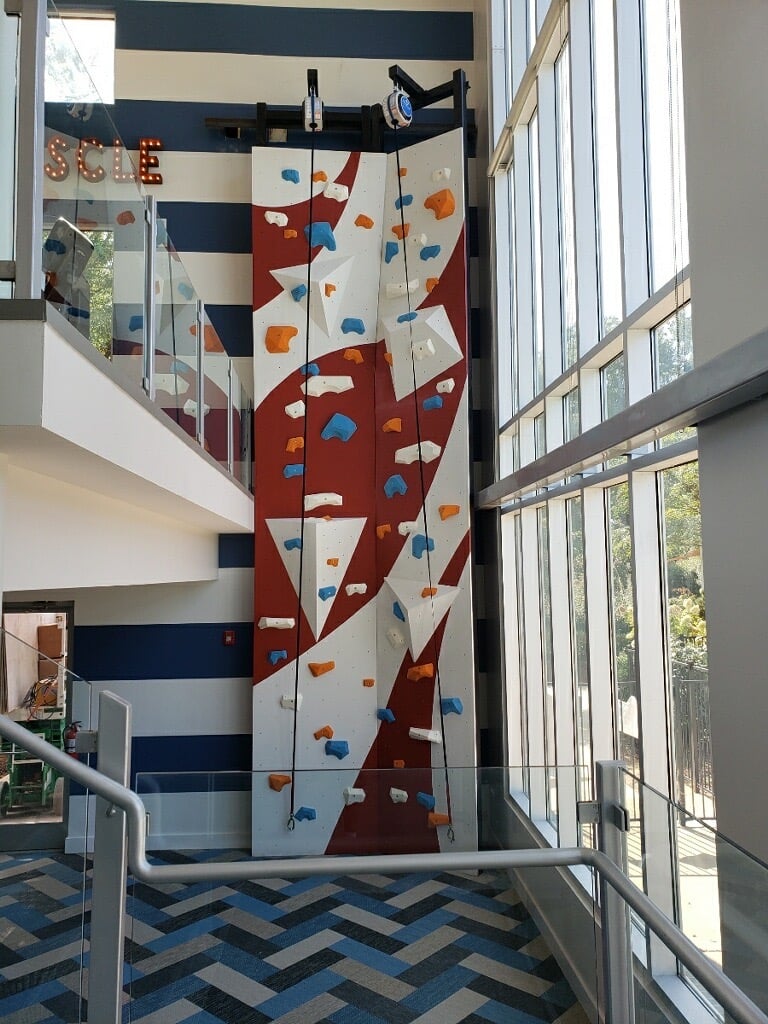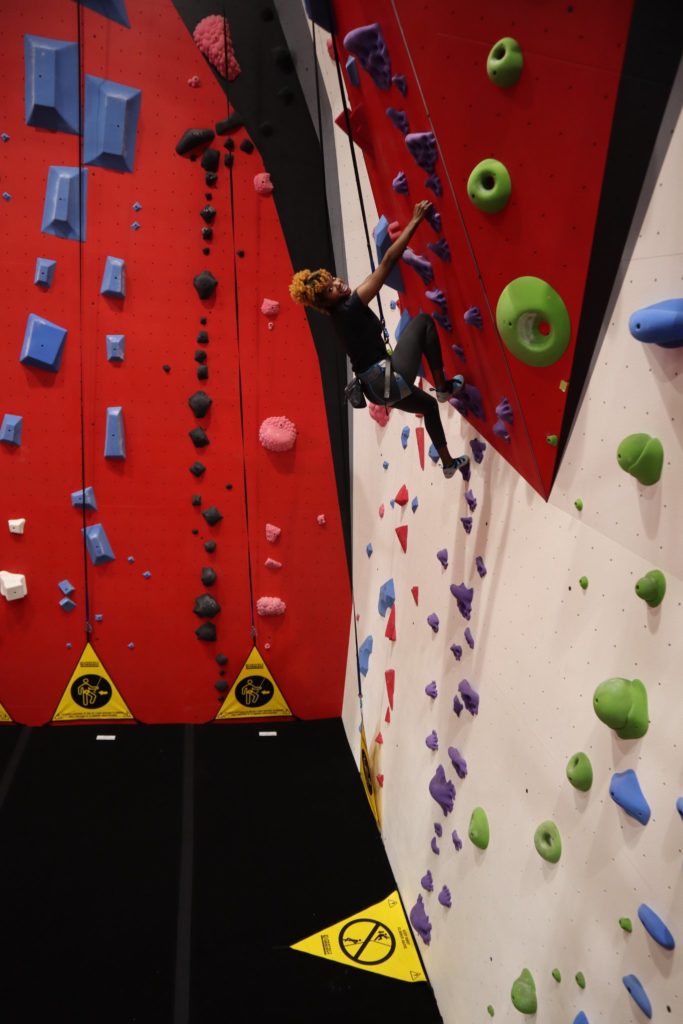Sport Climb

Sport Climb
Addressing the broadest range of ages and abilities, Sport Climb systems are the industry standard for serious indoor climbing. Our high quality, innovative Sport Climb climbing system combines character with strong visual appeal and unparalleled safety, in order to provide you and your customers with an exceptional climbing experience. Climbing Solutions is a pioneer in the design and installation of climbing walls. Our Sport Climb system utilizes a construction method that creates seamless geodesic climbing surfaces with big, curving, flowing designs. All this lends rigidity and durability that results in an exceptional climbing experience for users, a variable platform for setters, and a highly functional and stunning element for operators. Through our engineering excellence and passion for quality, innovation and safety, we strive to make our clients’ dreams come true. All Sport Climb projects receive the greatest level of care in design and construction, using only the highest quality materials. As a result, our walls are visually stunning, incredibly safe, and able to withstand years of heavy use. The modern, fluid designs of our Sport Climb walls are beautiful to both the casual observer and professional climber alike. Big, transitional surfaces present bright and impactful elements in any indoor or outdoor space. These giant naturalistic canvases immerse the climber in a truly dreamlike setting, and provide beginners and advanced climbers with a fun, timeless and inspirational climbing experience.
Triple Step Process for Maximum Strength and Durability
- Frame: Our structural steel frames are the backbones of our climbing walls. Each Climbing Solutions frame is structurally engineered to meet or exceed industry standards, providing years of safe, heavy-duty use.
- Surface: Our 3/4? plywood offers rigidity, T-nut proven strength, and maximum durability. Our beautiful Baltic Birch veneers complete each system and can be finished in a variety of colors and textures.
- Top coat: We can finish our walls in a number of ways. Whether you’re looking for bold colors, natural wood grains, or faux rock surfaces, we have solutions to satisfy your tastes. All options come in any color scheme, and can handle screw-in climbing holds.


Varied Wall Topologies Mats
Each wall possesses its own topology that describes the shape of the wall surface. The wall’s topology affects its climbability, appearance and cost, so we work with you to create the most appropriate wall for your specifications and budget. Flat or curved, with one simple curve or a unique mix of topologies, Climbing Solutions can design a wall that realizes your own personal vision.
- Flat surface: Like facets on a diamond, flat surfaces can be constructed in a variety of positions and shapes. Small or large, few or many, flat surface construction is the least expensive climbing wall method.
- Simple curves: Like the surface of a barrel, simple curves are just that—simple and true, although the arc need not be constant throughout the wall.
- Compound curves: These are the most complex and expensive walls, but they are beautiful to admire and climb. Visually stunning, compound curves are limited only by the imagination.
Types of Climbing
Bouldering
Climbing without ropes.
Very popular with kids, adolescents and active adults.
10’ to 20’ high walls with thick padded flooring systems to protect climber from falls.
Great for climbers of all abilities, but climbers must be confident in their ability to fall onto padding below.
With no ropes, a belay partner is not required, which frees participants from needing to organize climbing time with others.
Great for rooms with ceiling height restrictions.
Highest climber throughput rate; a climber will occupy a five-foot wide section of wall for about a minute.
Easy to staff for commercial applications.
Top Rope
Rope is anchored to the wall at the top of each climb.
Best for beginner and intermediate climbers.
20’ to 50’+ high walls.
Each climber requires a belay (which is usually another person) but auto-belay systems are available. Belay instruction requires 10 to 15 minutes per person.
Medium climber throughput rate; a climber will occupy a five-foot wide section of wall for approximately 5 to 10 minutes.
Lowest liability risk.
Lead Climbing
Similar to top-rope walls, but climber anchors rope to wall every five feet or so during ascent.
Intermediate to expert climbers only.
Advanced belayer required to protect climber from fall. Belay instruction can require multiple classes.
Lowest climber throughput rate.
Highest liability risk.
Staff-intensive for commercial applications.
Crack Climbing
Climbers climb wall by wedging hands and feet into cracks and pulling themselves up.
Walls are built to mimic the classic southwest mountain climbing. Vertical cracks with varying widths provide ample variations for technique.

